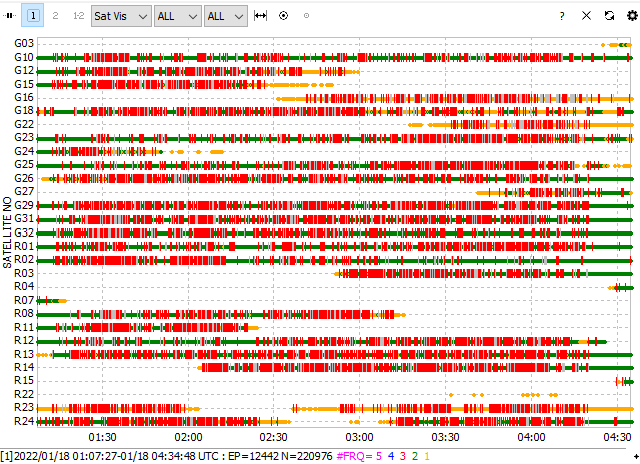Hi Roger,
I’ve checked the data you shared, and now I’m back to you.
First of all, I want to note that RTK and PPK results indeed may vary for the same dataset. It happens because of different algorithms of calculations. At the same time, PPK results may sometimes be improved: you can play with the settings and find a combination of them that gives you the best results.
Nevertheless, I agree with Christian that logs from the rover are quite poor. I see numerous cycle slips, which means that the satellite signal was interrupted by obstacles. These are conditions in which we don’t recommend working even with multi-band devices.
When the conditions are challenging, it’s essential to check these parameters:
PDOP shows the quality of the satellites’ geometry. In a forest, PDOP is most likely too high, which means the accuracy degrades.
- Age of differential to be about 2 second
Age of differential shows the difference between epochs of the base’s and rover’s data. Increasing this parameter means that there are interruptions with the corrections stream.
RMS helps evaluate the solution’s changing. So it allows noticing its instability.
I’ll discuss with the team how to make checking these parameters easier.
I see that 176 point indeed has a mismatch in 2 days, so it may look like a false fix. But to confirm it, we need to know the PDOP, Age of differential, and RMS.
If you face such an issue again, please enable the Raw data debug option, record raw data and solution logs, and share them with me. It’ll provide us with more info about the issue so we can analyze it.
UPD. Fixed the typo about AOD recommended time





